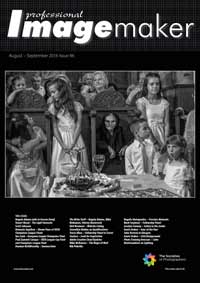articles/Business/write-shoot-page5
Writing and Shooting for Publications - part 5 of 1 2 3 4 5 6 7 8
by Mike McNamee Published 01/08/2016
Proof positive
A typical day in the life of a proofreader
By Shirley Macintosh
Let me start with a confession: the sub-heading of this article is slightly misleading. There is no 'typical' day in the life of a proofreader. The truth is that one day I could be diving into a 7,000-word dissertation on the breeding habits of humpback whales and the next focusing my razorsharp eye on the final proof of an upmarket photography magazine(!).
The proofreader's life is certainly anything but dull...
However, although the subject matter, length and format of the documents which professional proofreaders handle may vary dramatically from day to day, the general nature of the orthographic, typographical and grammatical errors we encounter tends to be fairly similar.
Beware the old chestnuts
If you're active on Twitter or Facebook, it's highly likely that you'll have seen countless posts from pedants bemoaning people's failure to recognise the difference between the following three sets of commonly used words:
• Your/you're
• They're/there/their
• Its/It's
Hard as it is for this ingrained grammarian to accept, not everyone is interested in grammatical correctness. Indeed these days the majority of people aren't remotely interested in grammar full stop, and that I accept.
However, what I find less easy to accept is the lack of attention to even the most basic principles of grammar that lie well within the abilities of anyone who's completed primary school (unless you happen to be dyslexic, in which case you are, of course, excused).
If you can master even a few of fundamentals - such as the correct selection of homophones (words that sound the same but are spelt differently) mentioned above - you'll immediately reduce the level of basic errors in your writing. So let's deal with these 'old chestnuts' once and for all before we go any further:
• Your means belonging to you.
• You're is a contraction of 'you are'. The apostrophe replaces the missing 'a'.
• They're is a contraction of 'they are'.
• There refers to a particular place, e.g. 'Over there'.
• Their means 'belonging to them'.
• Its (no apostrophe) means 'belonging to it', e.g. 'The dog ate its bone.'
• It's (with an apostrophe) is a contraction of 'it is'. The apostrophe replaces the missing 'i' from 'is'.
Please Note:
There is more than one page for this Article.
You are currently on page 5
- Writing and Shooting for Publications page 1
- Writing and Shooting for Publications page 2
- Writing and Shooting for Publications page 3
- Writing and Shooting for Publications page 4
- Writing and Shooting for Publications page 5
- Writing and Shooting for Publications page 6
- Writing and Shooting for Publications page 7
- Writing and Shooting for Publications page 8
1st Published 01/08/2016
last update 09/12/2022 15:00:31
More Business Articles
There are 0 days to get ready for The Society of Photographers Convention and Trade Show at The Novotel London West, Hammersmith ...
which starts on Wednesday 15th January 2025





